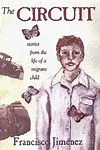I love shopping at Nordstrom. It is not because of the piano player perched next to the escalators. It is not because of the free samples of perfume. It is not even the cheap but delicious coffee, or the lime and chicken cilantro salad from the café. The reason I love shopping at Nordy’s is because of the way I get treated when I shop there.
The customer service practices keep me coming back again and again. Being able to return something that just didn’t quite work out is a fabulous feeling. I no longer have to suffer buyer’s remorse. Once I bought a pair of “Not Your Daughter’s Jeans” (NYDJ). I’m not kidding when I say NYDJ has some kind of miracle ingredient in the fabric. They stretch in a slimming way. I thought I won the trouser lottery when I bought my first pair. A few days later I got a card delivered to me. The envelope in the mail was addressed to me from Nordstrom. I was curious to see what was inside. A bill? No. A coupon? No. An advertisement? WRONG!
The salesperson who changed my life by introducing my bumper to these amazing pants wrote ME a thank you note. Her handwriting was beautiful (she must have had some great teachers who taught her cursive)! I should have been the one sending HER a thank you note.
The Nordstrom associate understood lagniappe in serving customers. Merriam Webster defines lagniappe as, “a small gift given a customer by a merchant at the time of a purchase; something given or obtained gratuitously or by way of good measure.”
I have been on the receiving end of lagniappe many times. My uncle Lorenzo took me with him to shop at an outdoor market near Naples. He did most of his shopping at outdoor markets and specialty shops. No super stores. Unlike in America, you don’t just “run” an errand. People there just didn’t seem to be in a hurry. I watched my relatives savor their meals, savor conversations, and savor the good life—vita bella! A shopper will no doubt see people they know at the market, and shopping for groceries is an event.
I wanted to buy some blood oranges. I’d never seen a blood orange before, and I was captivated by the vendor singing and trying to attract customers. It was fun being there and just observing his shenanigans. I handed the Tenor Vendor singing “O Sole Mio” a handful of lira (Italian currency before the Euro) and he gave me my purchase. In addition to what I bought, he gave me about two cups worth of hazelnuts. He also gave me and the other customers quite a show that even Luciano Pavarotti would envy. Now I have a word for it.... That’s LAGNIAPPE!
In the U.S. we have "gift with purchase" that is similar to what the Italian produce man did where he gave his customer a little something extra. Another company known for lagniappe is Disney. Every year, my husband and I take my daughter to Disney World for her birthday week. In 2015, we stayed at the Animal Kingdom Lodge. We checked in around 4pm. The person at the desk asked if we were celebrating anything special. "Our child's birthday," we said. We went up to the room to drop off our suitcases. Then we went to one of the parks.
When we got back to the room, we noticed a tray on our table. There were confetti sprinkles, a cloth napkin, and a note. “Check your fridge for your gift,” was written on the note. There sitting in the refrigerator was a round eight inch vanilla cake with two layers of strawberry filling. It said, “Happy Birthday” and even included our child’s name. Not just the generic Happy Birthday, but her name was written in frosting on the cake. Correct spelling and all.
I thought my husband was the cake fairy, and he thought it was me. We put our heads together to solve the cake mystery. A good working theory is needed anytime one tries to solve a mystery. After watching hundreds of Law & Order reruns, I have come up with my own theory about who the guilty party is. My theory is that it is usually the person least expected. The one character in the show you would never imagine is the suspect.
So, who could our cake fairy be? Who is the person least expected to send a cake for my daughter’s birthday week. I thought it was my in-laws. “Could it be Grandma and Grandpa?” I asked my husband. “No, I don’t think they know we’re here,” he replied.
“Could it be Nonno and Nonna?” I speculated. Then I realized, they too didn’t have the details of where we were staying. “Maybe it is Mickey Mouse… he’d be the one least expected to surprise you with a cake,” I said to my three year old. I called down to the main desk and they confirmed my theory. Eureka! It was Mickey Mouse! That is going the extra mile. That’s LAGNIAPPE!
My theory works (almost) every time. Try it the next time you are perplexed. Another American company known for lagniappe is the Marriott. I took my daughter to Seattle to visit family when she was fifteen months old. We drove four hours from our house in central Pennsylvania to Philadelphia. Instead of getting on the flight the same day, I decided to break up the trip and stay over in Philly for the night. The trip to Washington would be about 6 hours and I didn’t think the 10+ hours of travel would be good for my baby.
We checked in and asked for a crib for my daughter. They sent someone up with a crib and crib sheet. The Marriott employee set up the crib for us. Then he gave us a teddy bear wearing a Marriott shirt. That’s LAGNIAPPE!
When I take my car in for an oil change, the dealership throws in a car wash. That’s LAGNIAPPE!
In all these scenarios, someone went above and beyond what was expected of them to make their customer happy. It was unnecessary, but greatly appreciated. I think it would be an amazing paradigm shift if we started treating families like they are cherished customers. Customer satisfaction should be an important goal in the delivery of services we provide our students and their families in educational settings. LAGNIAPPE!












































